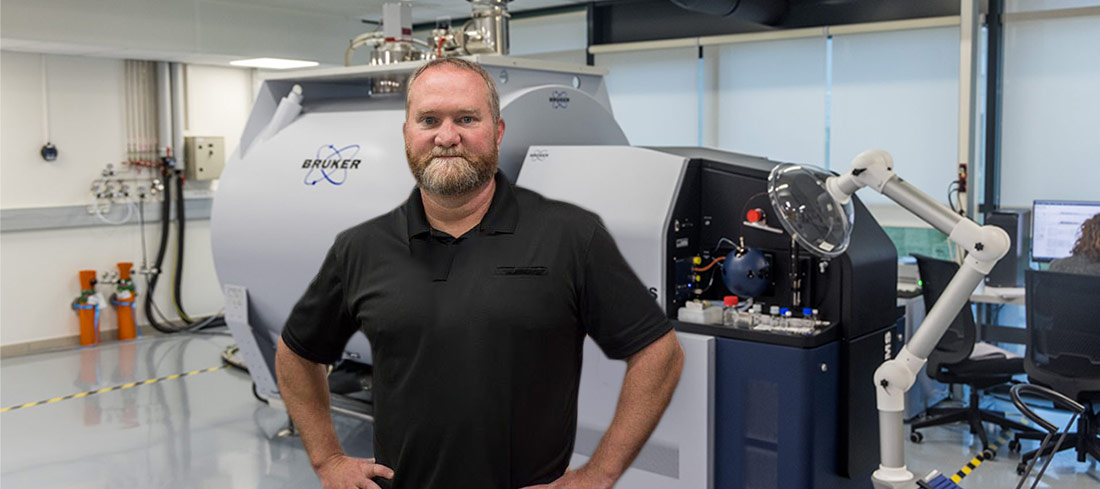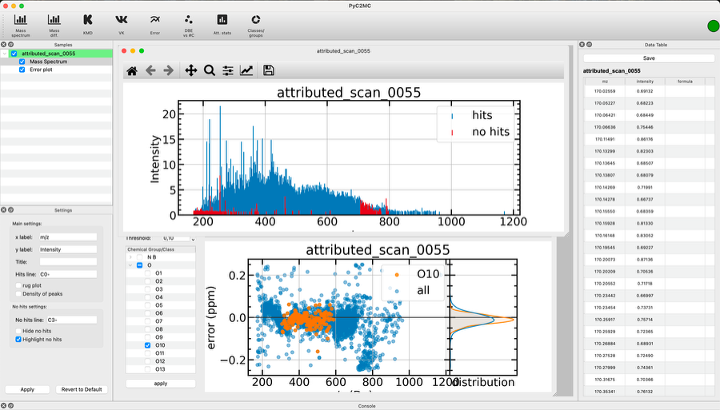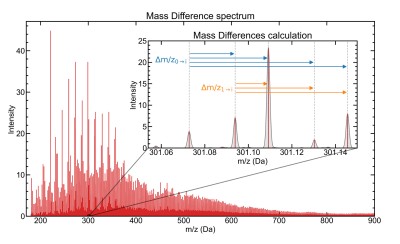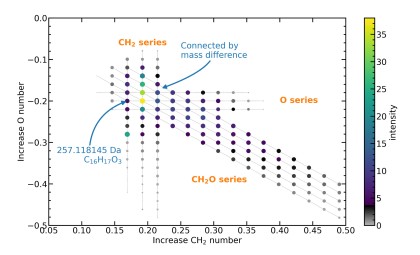International Chair Pioneers Mass Spectrometry for Energy and the EnvironmentWith Florida State University

Led by Ryan Rodgers, a researcher at Florida State University, and coordinated by Brice Bouyssiere of the Institute of Analytical Sciences and Physico-Chemistry for Environment and Materials (IPREM), the International Chair for Molecular Characterisation in Energy and the Environment (ICMCE2) ended in 2024.
Its aim was to use ultra-high resolution mass spectrometry to understand the complex processes involved in the degradation of organic carbon in the environment. The chair has given rise to new research projects, notably with the US Department of Energy and the University of California at Berkeley, and to the creation of software for processing and displaying high-resolution mass spectrometry data.
Drawing on the expertise and powerful equipment of the International Laboratory for the Molecular Characterisation of Complex Matrices (iC2MC), the aim of the chair was to develop non-targeted analysis at the molecular level of complex systems in the fields of energy and the environment. More specifically, the goal was to understand temperature-related changes in the composition of dissolved organic matter (DOM) and its potential for binding metals.
In partnership with TotalEnergies, the Chair also aimed to expand knowledge of the composition and structure of chemical compounds in complex carbon-based matrices, which will play a key role in replacing fossil energy sources in the future. The team studied the composition of pyrolysates (pyrolysis residues) produced from biomass, plastics and other high-carbon waste.
Separations based on extrography, a method combining extraction and chromatography, first developed for fossil materials, have been successfully extended to biomass pyrolysates. Two new methods for separating polyfunctional oxygenated compounds have also been developed.
The work carried out has also helped to understand the deterioration of electrodes in new-generation batteries.
Creating open source software
Until now, commercial software solutions have had their drawbacks, such as being unable to process large datasets, not being freely accessible, or requiring prior knowledge of the samples in order to analyse them. This could lead to significant biases in the analysis and made the processing of new samples extremely complex. The very high resolution of FT-ICR-MS analysis of complex matrices can easily lead to mass spectra each containing more than 10,000 unique molecular formulae. The massive amounts of data acquired by this type of instrument therefore require advanced methods for reliable processing.
Finally, the laboratory is co-organising the first Transition Analytics for Decarbonization (TAD) international conference, which will be held from October 1 to 3, 2025, in Paris at the French national research center (CNRS) headquarters.
E2S stands for “Energy and Environment Solutions”. It is a research consortium involving UPPA, INRAE, Inria and CNRS that has obtained funding from the Programme d'Investissements d'Avenir, now France 2030, thanks to the I-SITE (Initiative Sciences, Innovation, Territoires, Économie) university excellence label. Between 2017 and 2024, the I-SITE funded a number of partnership research projects, including international chairs.



